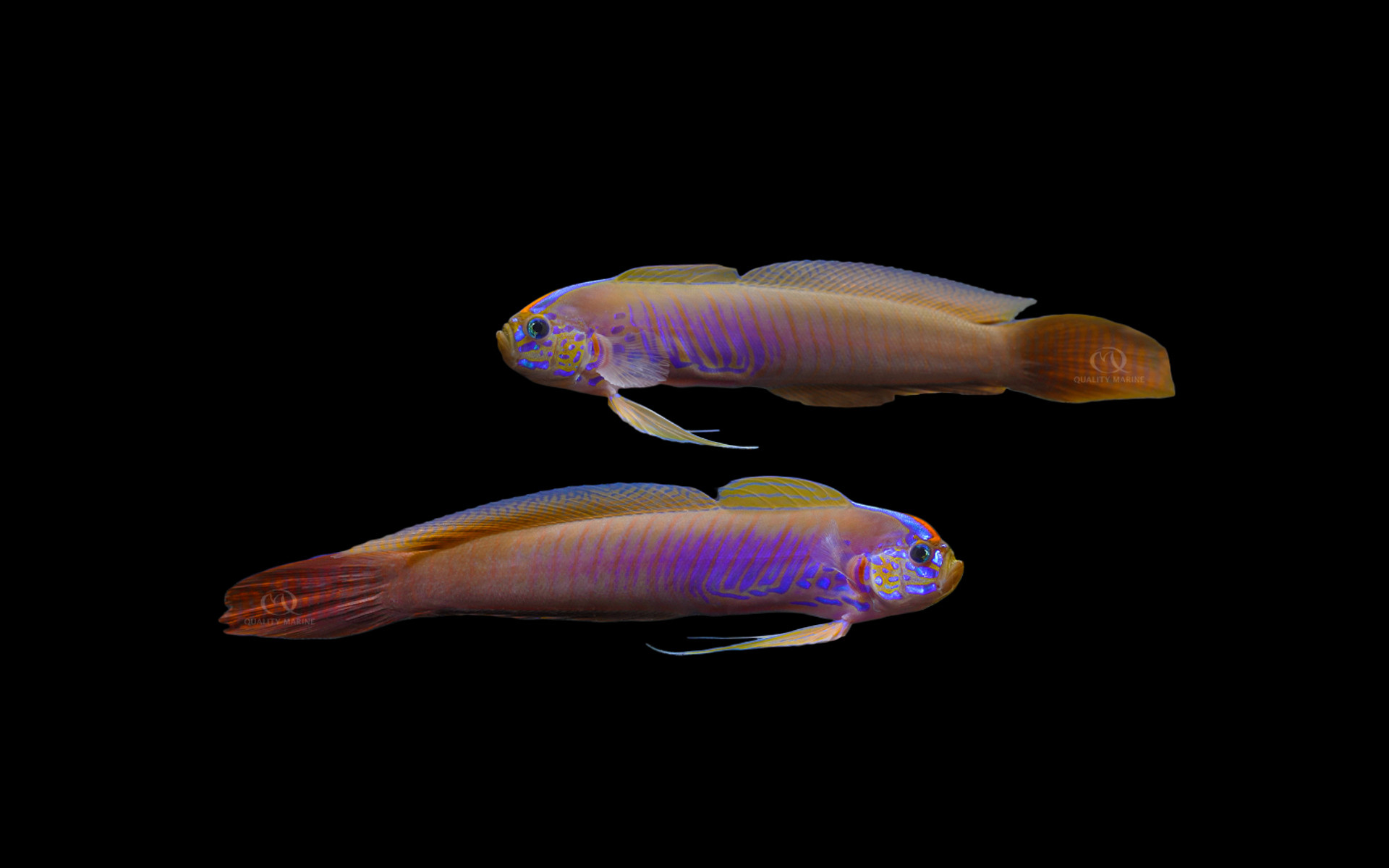Righteous Razors

What we in the US and Canada call the Razor Goby, (Oxymetopon cyanoctenosum) has very few common names world wide. In China, it is known as the Blue Comb Snailfish, and throughout its native range, it is known as the Blue-Barred Ribbon Goby. That range spans most of the tropical Indo-Pacific Ocean, from the northern edge of Australia in the south, to Taiwan in the north. They generally live on soft bottom flats from 45 to 100 feet deep, in places where the water is often murky. There they burrow into the substrate creating small communities, formed of pairs which share burrows.
This is not an extraordinarily rare fish in the wild, but its natural habitats aren't commonly known as amazing dive locations; nor do they come from places where collection of aquarium species is common place. Because they are not often collected, this tends to be a very rare fish, not only domestically here in the North American hobby, but worldwide.
As far as Gobies go, Oxymetopon cyanoctenosum gets fairly large. The biggest specimen recorded was seven inches long! We see them more commonly max out in the four or five inch range. They don't range too far from their burrow, which makes them ideal for smaller aquariums, especially if you, the aquarist, is planning to keep only two, and two is ideal. A minimum tank size for a pair would be 55 gallons if you wanted to have other tankmates. A pair without other fish in the display could probably be kept in something as small as 40 gallons if it was remarkably stable and had excellent filtration. When choosing tankmates, be sure to house the Razor Gobies with very peaceful, slow moving fish. Pajama and aquacultured Banggai Cardinals, aquacultured Ocellaris Clownfish are great examples and even things like Dartfish / Firefish could be good tankmates if introduced at the same time. Avoid very active and potentially aggressive fish like tangs, triggers and most wrasses, as the activity these bring to the aquarium can keep the very timid Razor Goby in its burrow, hiding from everything (including mealtimes).
Displays for the Razor Goby should be planned with a lot of very fine sand or mud, think at least 3 inches. These fish will need to make a burrow to thrive, and the substrate needs to allow for this. Flow requirements are limited to reasonable turnover for filtration and whatever is needed to help prevent algal build up. Plan flow to ensure your substrate stays where you (and your Razor Goby) put it. Plan your rockscape so that it isn't undermined by burrowing fish. In the wild, Oxymetopon cyanoctenosum has two defense mechanisms: swimming at top speed toward the burrow, and swimming at top speed in a random direction. When startled, one of these two things will happen, and be assured, it will be at lightning speed. As a result, we ALWAYS cover their holding tanks in our facility and ALWAYS recommend you do the same at home. While they are not notorious escape artists, they are easily startled and will end up on the floor if you don't cover their display.
In the wild, these gobies eat small bits of anything that floats past their burrows. This makes them well suited for eating prepared aquarium foods. The primary challenge in getting them to eat is not the food, but the shyness. As your Gobies acclimate to their new environment, they will spend more and more time out of the burrows, especially at meal times. Initially, however, you may need to use a baster to put some thawed meaty foods near the opening of their burrow to entice them out to eat. We feed them a mix of meaty marine based thawed foods, chopped to a very fine, bite-able size and mixed with a very small high quality pellet. It isn't long before they recognize the pellet as food, and the people as feeders. In house, we feed them at least twice a day and this keeps them in fine condition. Many hobbyists report feeding other similar fish like Firefish, even more frequently without deleterious results. These are great fish for aquariums that have live food refugiums as well, which can help provide consistent live snacks for your pets throughout the day.
Keeping the Razor Goby in the home aquarium has a few challenges, none of which are serious obstacles for success. Feed them frequently, choose good tankmates and give them a lot of sand to burrow in. Most Oxymetopon cyanoctenosum are a bit of a dull grey color when they first arrive, but color up in the most unbelievable way, becoming iridescent blue, with neon blue bars along their gills and neon spots on their heads. A little good food and some confidence in their environment really brings out color on this fish. If you're looking for a gorgeous, rare fish for your peaceful display, a pair of Razor Gobies should be on your list. Ask your LFS about getting some for you from Quality Marine today!